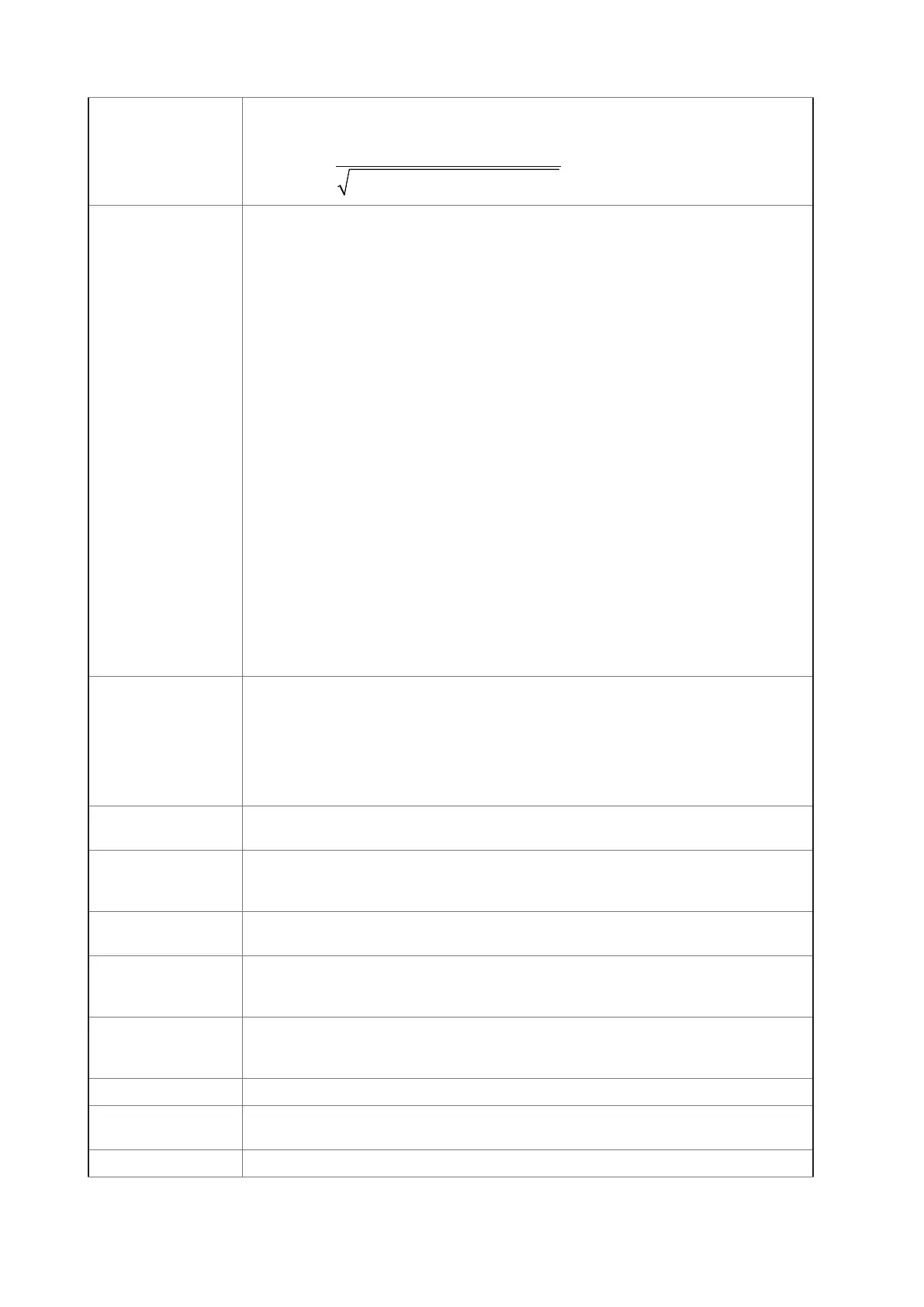Appx.28
Terminology
Power factor demand
value
The power factor calculated using the active power demand value (consumption) and the
reactive power demand value (lag) for the set interval time (usually 30 min).
2 2
( ) ( _ )
Pdem
PFdem
Pdem Qdem LAG
+
=
+ +
Power factor (PF/
DPF)
Power factor is the ratio of active power to apparent power.
The larger the absolute value of the power factor, the greater the proportion of active
power to the apparent power, and greater the efciency. The maximum absolute value is 1.
Conversely, the smaller the absolute value of the power factor, the greater the reactive
power with the apparent power, and lower the efciency. The minimum absolute value is 0.
For this device, the sign of the power factor indicates whether the current phase is lagging
or leading the voltage.
A positive value (no sign) indicates that the current phase is lagging the voltage. Inductive
loads (such as motors) are characterized by a lagging phase.
A negative value indicates that the current phase is leading the voltage. Capacitive loads
(such as capacitors) are characterized by a leading phase. These signs are the opposite
of those for the harmonics phase angle and phase difference.
The power factor (PF) is calculated using RMS values that include harmonic components.
Larger harmonic current components cause the power factor to deteriorate.
By contrast, since the displacement power factor (DPF) calculates the ratio of active
power to apparent power from the fundamental voltage and fundamental current, no
voltage or current harmonic component is included.
This is the same measurement method used by reactive power meters installed at
commercial-scale utility customers’ facilities.
Displacement power factor, or DPF, is typically used by the electric power system,
although power factor, or PF, is sometimes used to measure equipment in order to
evaluate efciency.
When a lagging phase caused by a large inductive load such as a motor results in a low
displacement power factor, there are corrective measures that can be taken to improve
the power factor, for example by adding a phase advance capacitor to the power system.
Displacement power factor (DPF) measurements can be taken under such circumstances
to verify the improvement made by the phase advance capacitor.
Reactive power Power that does not perform actual work, resulting in no power consumption as it travels
between the load and the power supply.
Reactive power is calculated by multiplying the active power with the sine of the phase
difference (sin
θ
). It arises from inductive loads (deriving from inductance) and capacitive
loads (deriving from capacitance), with reactive power derived from inductive loads known
as lag reactive power and reactive power derived from capacitive loads known as lead
reactive power.
Reactive power
demand
The average reactive power used during a set period of time (usually 30 min).
RMS current
refreshed each half-
cycle (Irms1/2)
The RMS current is calculated using a value measured over a 1-cycle time refreshed each
half-cycle.
Model PW3198 Power Quality Analyzer uses the RMS for every half-cycle.
RMS value The root mean square of instantaneous values for a quantity obtained over a particular
time interval or bandwidth.
RMS voltage
refreshed each half-
cycle (Urms1/2)
The RMS voltage is calculated using a value measured over a 1-cycle time refreshed
each half-cycle.
RS-232C The RS-232C is a serial interface established by the EIA (Electronics Industries
Association). RS-232C also conforms with the specications of DTE (data terminal
equipment) and DCE (data circuit terminating equipment) interface conditions.
SD memory card A type of ash memory card.
Swell A phenomenon in which the voltage rises momentarily due to a lightning strike or the
switching of a high-load power line.
Text data A le containing only data expressed using characters and character codes.

